Hayabusa-2: Rocks from an asteroid set for delivery to Earth
- Published
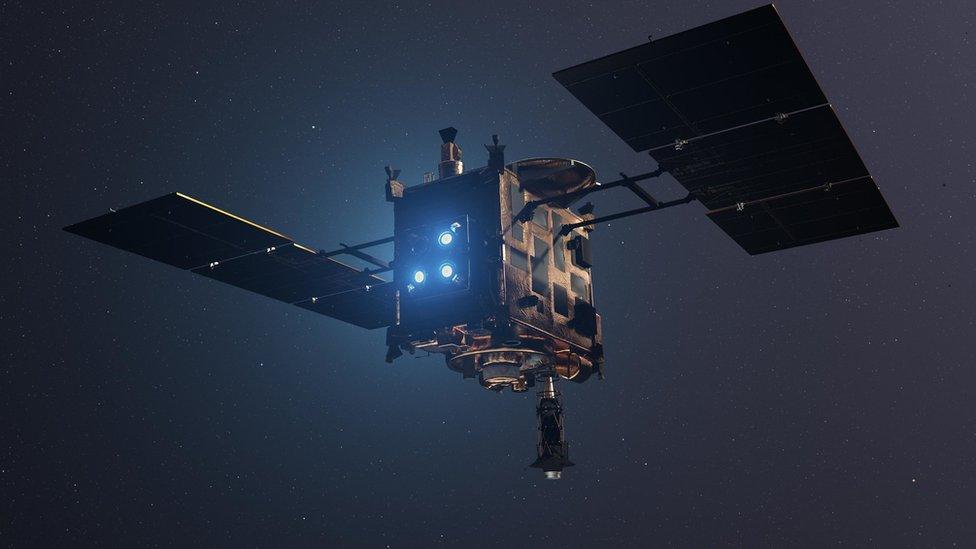
Artwork: Hayabusa-2 made its way back to Earth after visiting the near-Earth asteroid Ryugu
The first large sample of rock and soil from an asteroid is making its way back to Earth.
A capsule containing the material was released by Japan's Hayabusa-2 spacecraft on Saturday morning (GMT), as it approached our planet.
The sample container should deploy parachutes and land in the Australian outback this evening.
Hayabusa-2 grabbed the cosmic treasure trove from Ryugu, one of the primitive building blocks of our Solar System.
These objects are relics from billions of years ago, when the Earth was still forming. But they continued to roam, never becoming incorporated into planets.
Scientists say that studying the material from Ryugu could provide insights into how life itself began.
Prof Alan Fitzsimmons from Queen's University Belfast, who is not involved with the mission, said the sample would "reveal a huge amount, not only about the history of the Solar System, but about these particular objects as well".
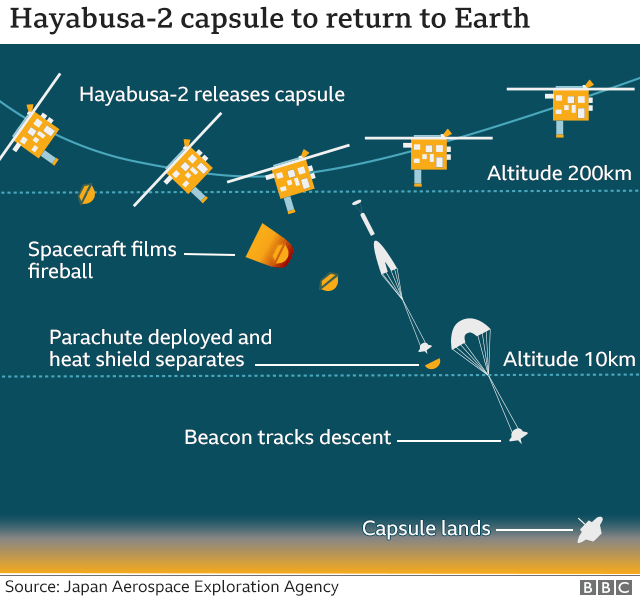
The operation began at 05:30 GMT on Saturday, when the capsule separated from the main spacecraft. Team members at mission control in Sagamihara, Japan, clapped and bumped elbows as confirmation came through six minutes later.
While the capsule headed home to Earth, the "mothership" changed its orbit to bypass our planet.
After the manoeuvres this morning, mission manager Makoto Yoshikawa said the operation had gone to plan, adding: "One final operation is the recovery of the capsule. When this is done, the mission is complete."
On Saturday evening, the capsule should be visible to skywatchers in Australia's Coober Pedy region as a fireball streaking overhead.
It is scheduled to touch down within a 100sq km (39sq mile) area at the Royal Australian Air Force's Woomera range between 17:47 GMT and 17:57.
A beacon on the capsule will transmit data about its position, which will be analysed by teams in Australia to find where it has landed.
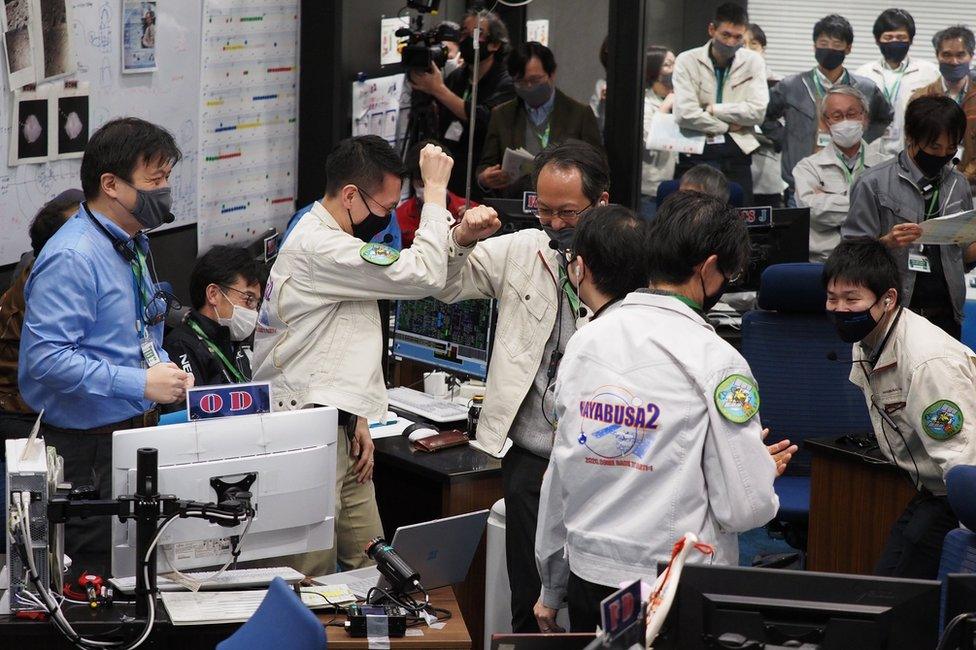
Project manager Yuichi Tsuda (third from left) bumps elbows with other team members after confirmation of Hayabusa2's successful trajectory change
Once it has been located, it will be taken to a "quick-look facility" for inspection before being airlifted to Japan.
The capsule will be transported to a curation chamber in Sagamihara for analysis and storage.
The mission planned to collect a sample of more than 100mg.
"I hope it works well, and I hope the weather in Australia is very good. I'm very excited and looking forward to it," said Yuichi Tsuda, project manager for the Japan Aerospace Exploration Agency (Jaxa), external mission.
Ryugu appears to have migrated to its present position near Earth from the asteroid belt between Mars and Jupiter. But its true, even-more-ancient origin probably lies much further away, in the outer Solar System.
It belongs to a particularly primitive class of space rock known as a C-type asteroid. Objects like it may have seeded the early Earth with water and the chemical ingredients necessary for life to get started.
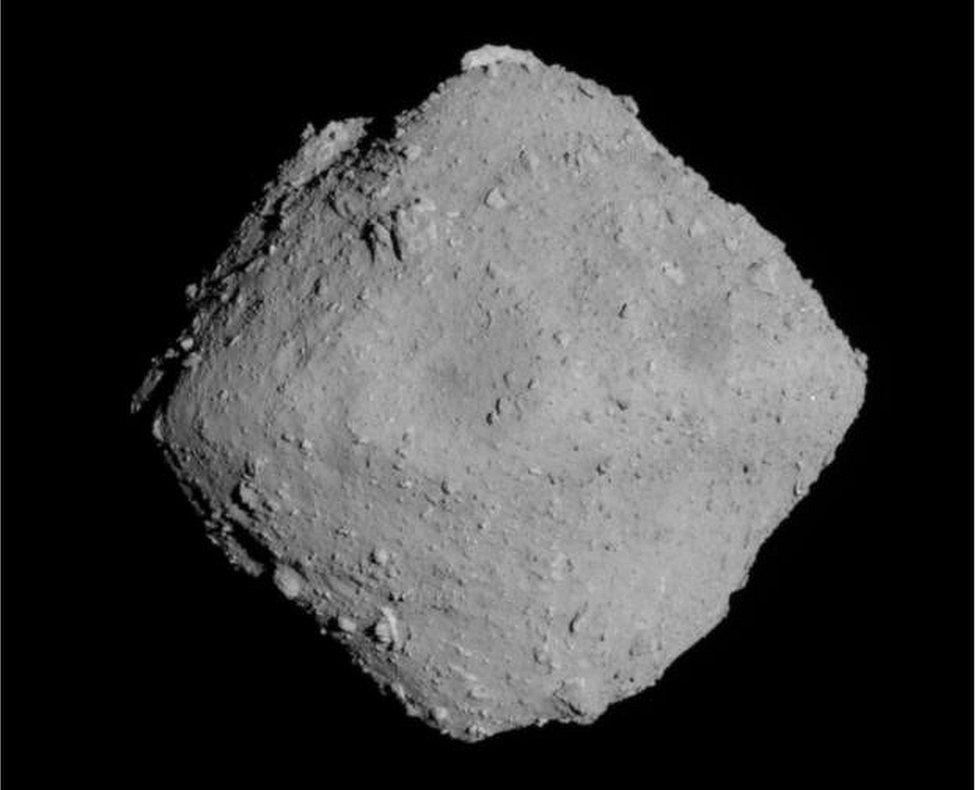
Hayabusa-2 arrived at the asteroid 162173 Ryugu in 2018
"Having samples from an asteroid like Ryugu will be really exciting for our field. We think Ryugu is made up of super-ancient rocks that will tell us how the Solar System formed," Prof Sara Russell, leader of the planetary materials group at London's Natural History Museum, told BBC News.
"We think that this asteroid may have organic material and water which can give us information about how these things were delivered to the early Earth."
Researchers from around Japan, and other countries, will be working with the samples. In the UK, Prof Russell's team at the Natural History Museum and scientists from the universities of Manchester and Glasgow will get to study the material.
Dr Sarah Crowther is one of several researchers at Manchester who are expecting to receive samples next year. She will use a unique scientific instrument at the university to analyse soil from Ryugu.
"Different labs contribute different expertise, which all helps in understanding the material collected and what that tells us about the formation and evolution of the Solar System," she told BBC News.
"The signature of the material that Earth formed from has been overwritten, but that signature is retained on some asteroids."
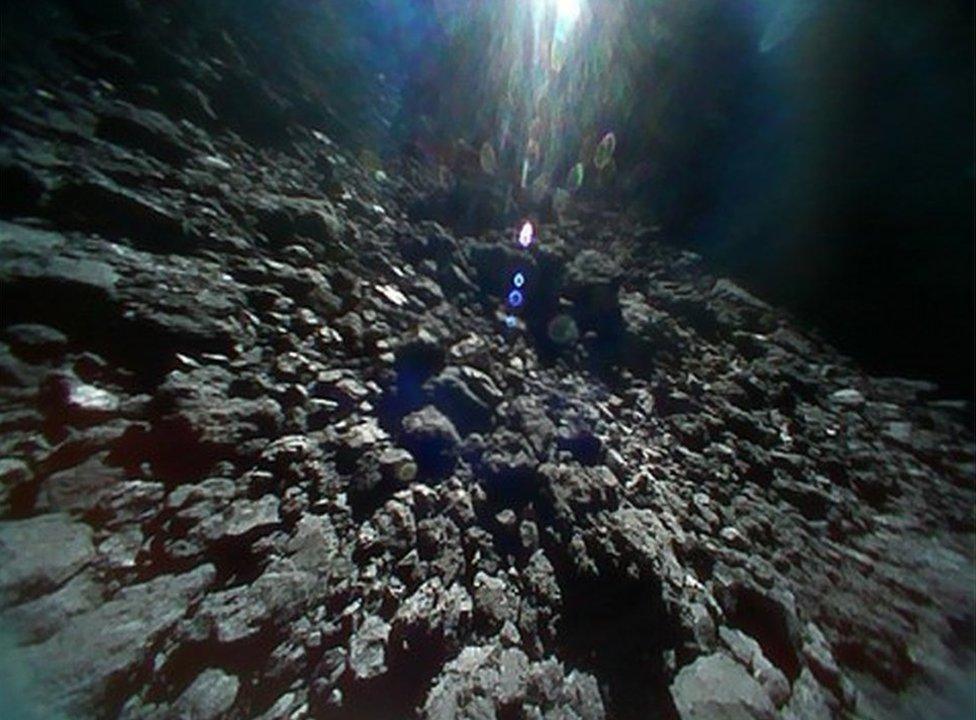
A rover deployed by Hayabusa-2 sent back this image from the surface of Ryugu
Hayabusa-2 was launched from the Tanegashima Launch Center in far southern Japan on 3 December 2014. It reached the 1km-wide, spinning top-shaped object in June 2018.
Prof Fitzsimmons told BBC News: "The interesting thing is going to be: what are the similarities between the meteorites we have on Earth [from C-type asteroids] and the differences.
"The other important thing is that it (Hayabusa-2) has two samples. Because the first sample was gathered from the surface and the second sample was gathered from the sub-surface which was excavated by the explosive charge."
That later sample was collected by detonating the charge just above the asteroid. This drove a copper projectile into the surface, punching a 20m-wide crater in Ryugu.
Hayabusa-2 subsequently descended into this depression to collect fresh rocks that had not been altered by aeons of exposure to the environment of space.
"Those comparisons are going to be really important for understanding how those surface rocks change when they're in the inner Solar System," said Alan Fitzsimmons.
With the samples safely cached, the spacecraft began making its way home to Earth in November 2019.
The first Hayabusa spacecraft was launched in 2003 and reached the asteroid Itokawa in 2005.
Despite being hit by several mishaps, it returned to Earth in 2010 with a small amount of material from the asteroid.
Follow Paul on Twitter, external